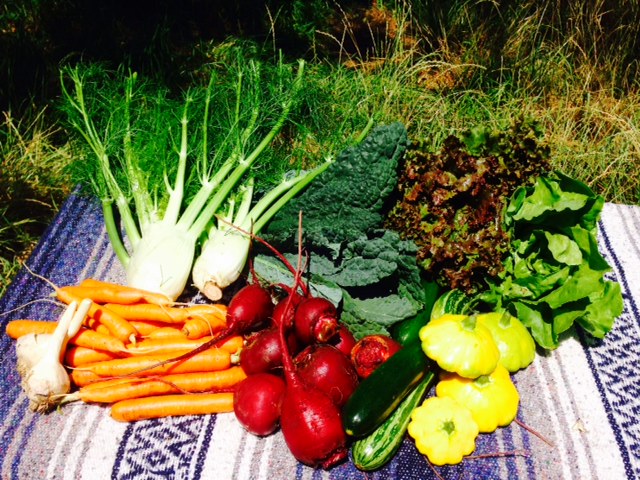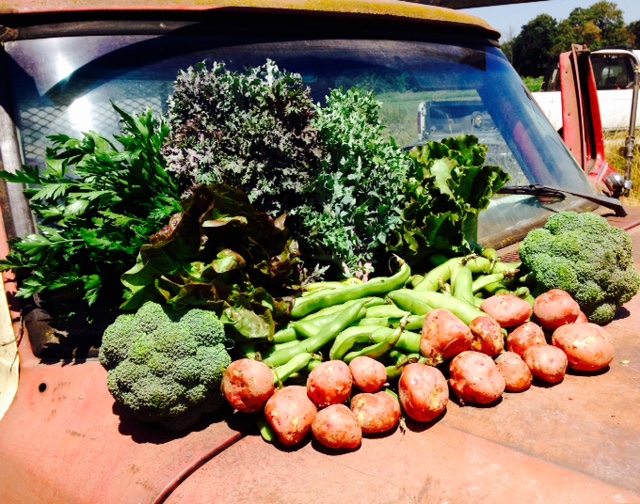In Your Share This Week
- Beets
- Carrots
- Celeriac
- Kale
- Lettuce
- Onion, Wallas
- Peppers, sweet & jalapenos
Crop Notes
Celeriac: This is an awesome fall treat that many people are probably unfamiliar with- it is also sometimes referred to as ‘celery root’…and we have lots to say about it! Celeriac is a rather bizarre looking root vegetable- but when peeled down, its great for savory fall dishes. Think of them like you would potatoes (they are an excellent companion to just about any potato dish, by the way)- boiled, roasted, seared, smashed, stewed, etc. When you’re ready to cook up your celeriac, start by cutting off all of the hairy, fringed roots on the bottom. This is where a lot of the excess soil tends to hide, so I generally just compost that part. Now you have a flat bottom that you can use to make peeling the rest of the bulb easier. Cut the top off as well, then run your knife down along the sides to remove all of the hairs, knobs, and rough skin. The flesh underneath is a nice creamy white color and is now ready to be cubed, sliced, or whatever you plan to do with it. Do not trim down the celeriac too far ahead of time, because it will begin to oxidize and turn brown and rust colored (not to worry, if you put your celeriac in a plastic bag in the fridge it can last for several months with no problem, so trim it right before use). Celeriac really enhances the flavor of stocks, soups, and stews, and when its in season I never make a batch without it…so if you make stock at home with your vegetable trimmings, make sure to save the celeriac skins and tops to toss into the stock pot. This week we are featuring an heirloom variety that is not commonly produced commercially because it oxidizes rather rapidly and has a pretty hairy root compared to other varieties- but the flavors is *great* Enjoy!
 through the summer months, but had a complete crop failure this summer. That is all behind us now, and we have lots of beautiful Red Russians, Lacinato, and Rainbow Lacinato to look forward to! This week you’ll be receiving a Red Russian type- we currently grow several varieties of Red Russians because we like them all so much we could not pick just one…plus having some genetic diversity helps protect us against losses- so if one variety isn’t doing so well, another one is likely to still be performing well.
through the summer months, but had a complete crop failure this summer. That is all behind us now, and we have lots of beautiful Red Russians, Lacinato, and Rainbow Lacinato to look forward to! This week you’ll be receiving a Red Russian type- we currently grow several varieties of Red Russians because we like them all so much we could not pick just one…plus having some genetic diversity helps protect us against losses- so if one variety isn’t doing so well, another one is likely to still be performing well.Peppers: As mentioned last week, we have completely fallen in love with the vibrant colors, sweet flavor, and heavy yields of the sweet pepper varieties from Wild Garden Seed The folks at Wild Garden Seed really know their stuff- we can tell the difference in quality right from the very beginning as the seeds germinate and grow into healthy plants, up to harvest time where we evaluate yields, plant health, flavor, visual appeal (yes, we eat with our eyes too!), and storage capability. Our pepper plants are so happy this year that they are loaded down with huge clusters of peppers and showing no signs of slowing down as we approach cooler weather. Viva local agriculture, from seed to table!
Other News
We are extremely proud to be working with Portland Public Schools this fall! We have been in contact with them since last season about providing certain fall crops and are now going to be providing sweet peppers for them to feature! We love the idea of getting more fresh, local, healthy vegetables into the schools and are excited to get to participate in that process.
Speaking of schools- we are also selling produce to University of Portland, Reed College, Lewis and Clark, and more recently, Oregon Episcopal School. We enjoy working with higher learning institutions and feel honored to get our produce onto their campuses. Plus, college students can use some healthy food in between cram-sessions! We thank the colleges and universities we work with for having the forward practices to feature local products, and appreciate their ongoing support of our farm.

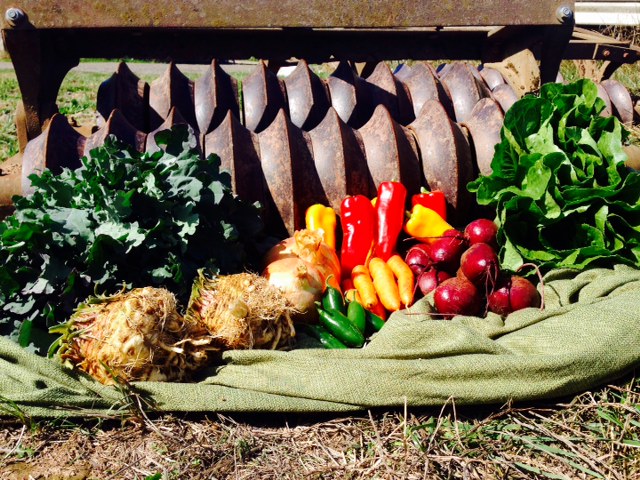

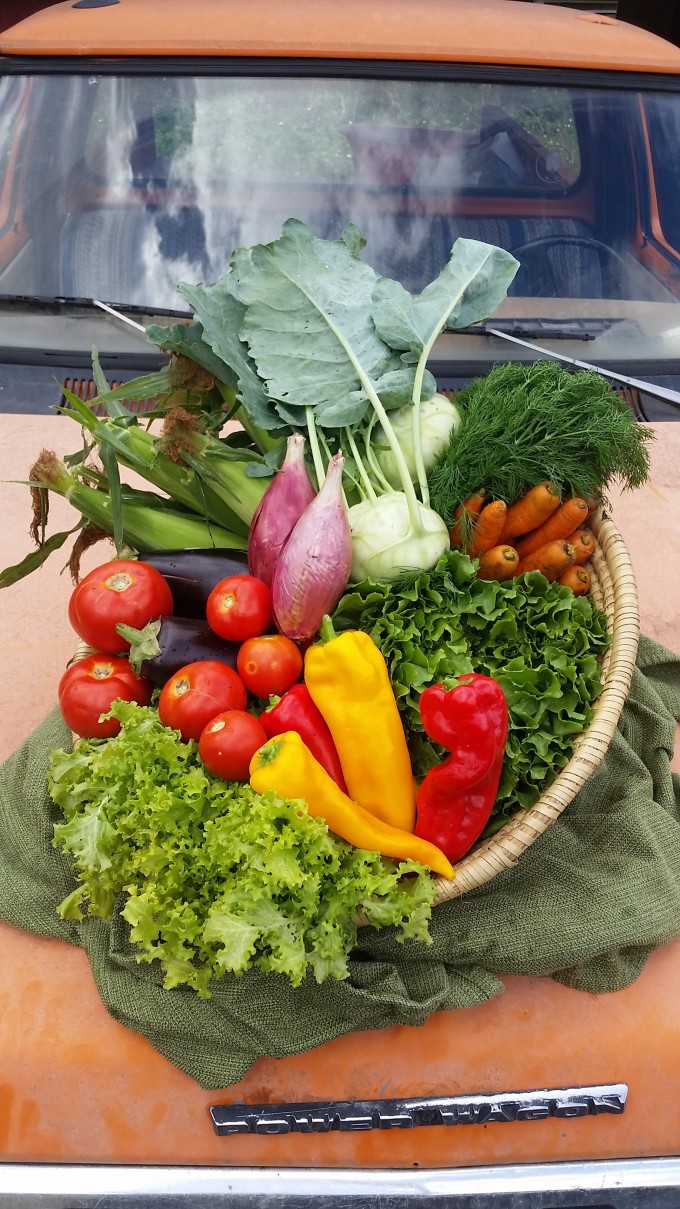



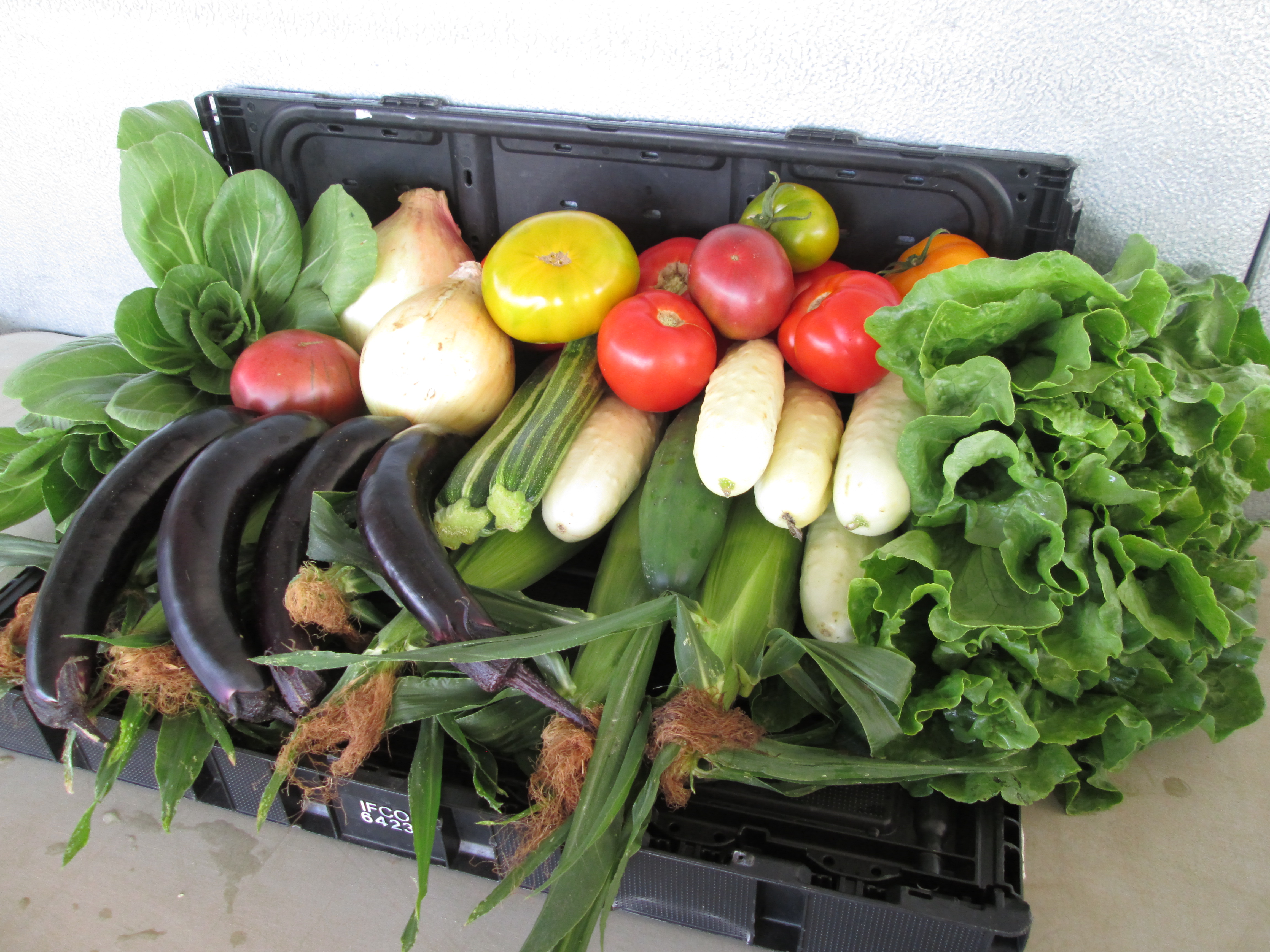



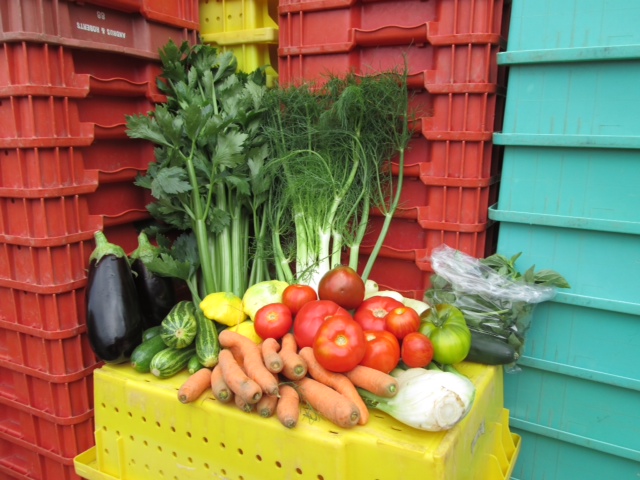

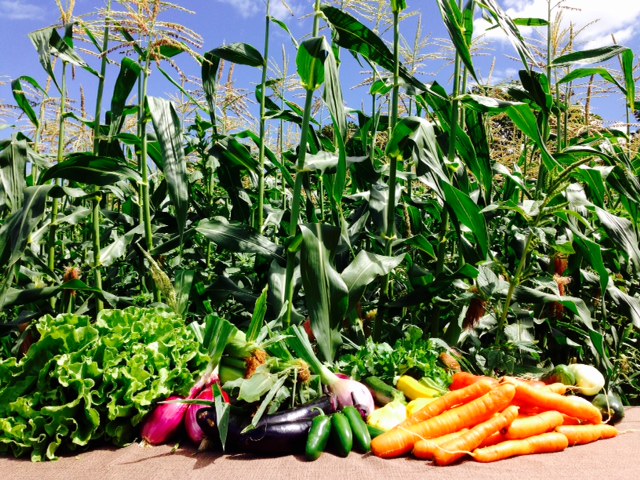


 Sidonie Harper-McPike
Sidonie Harper-McPike